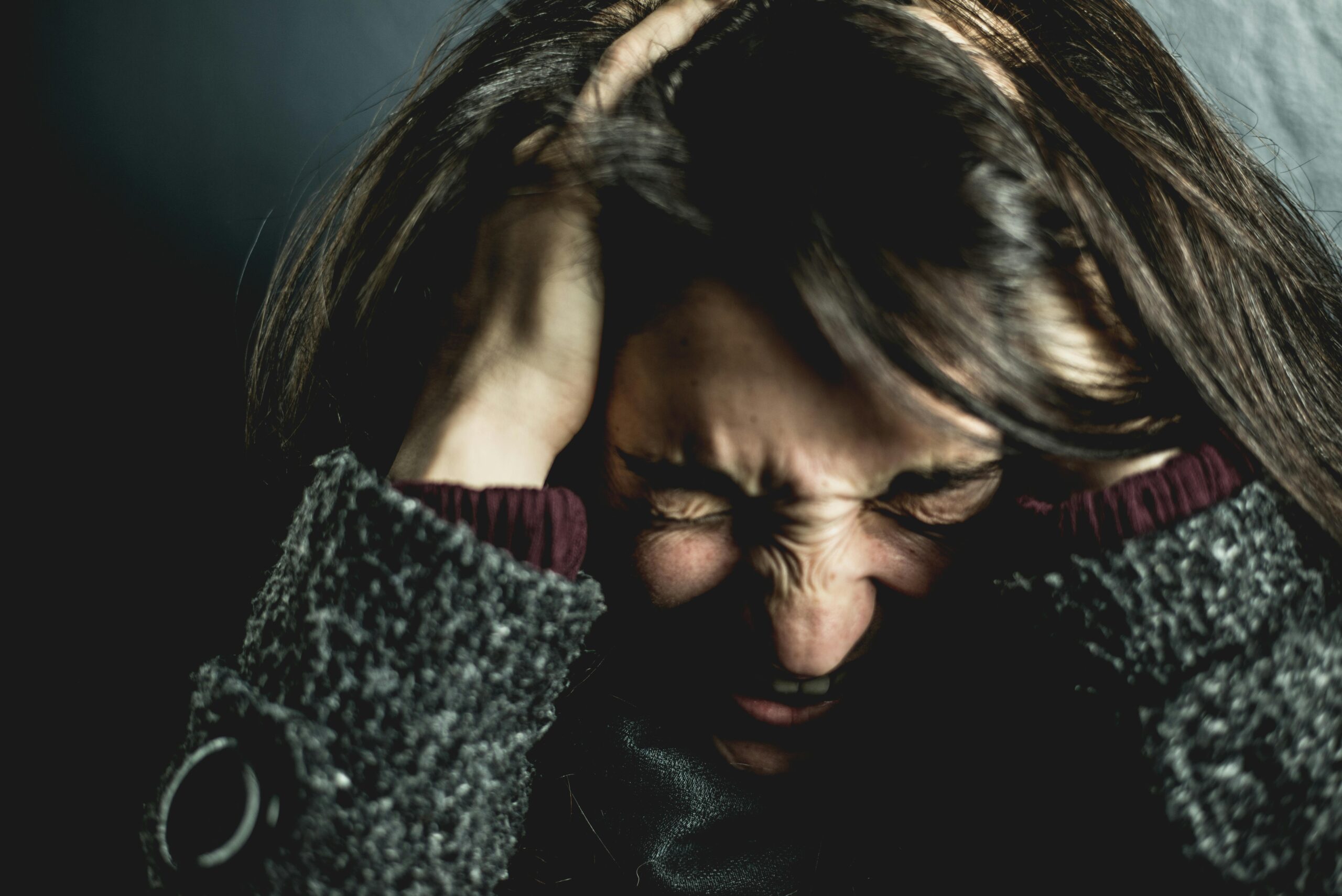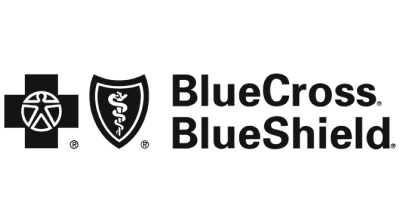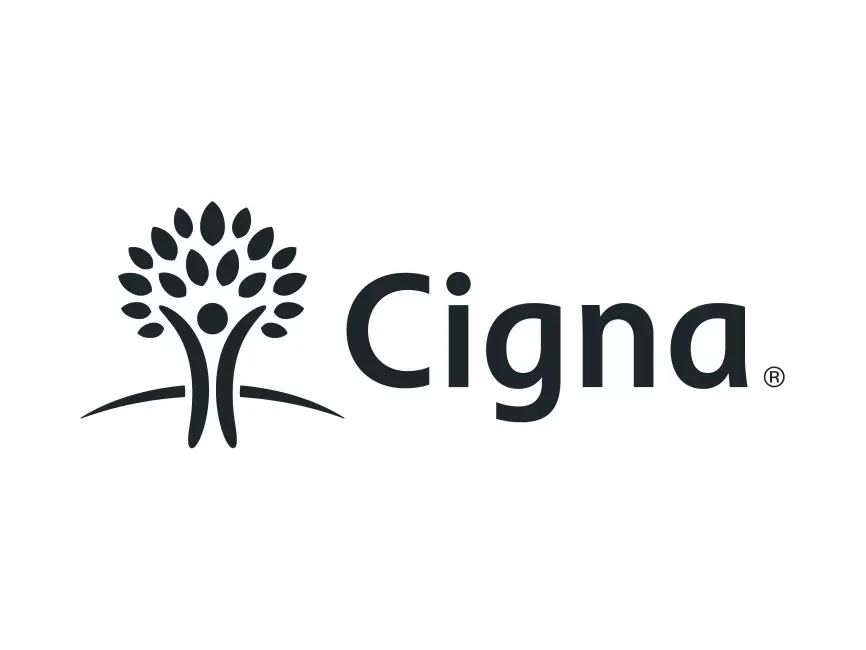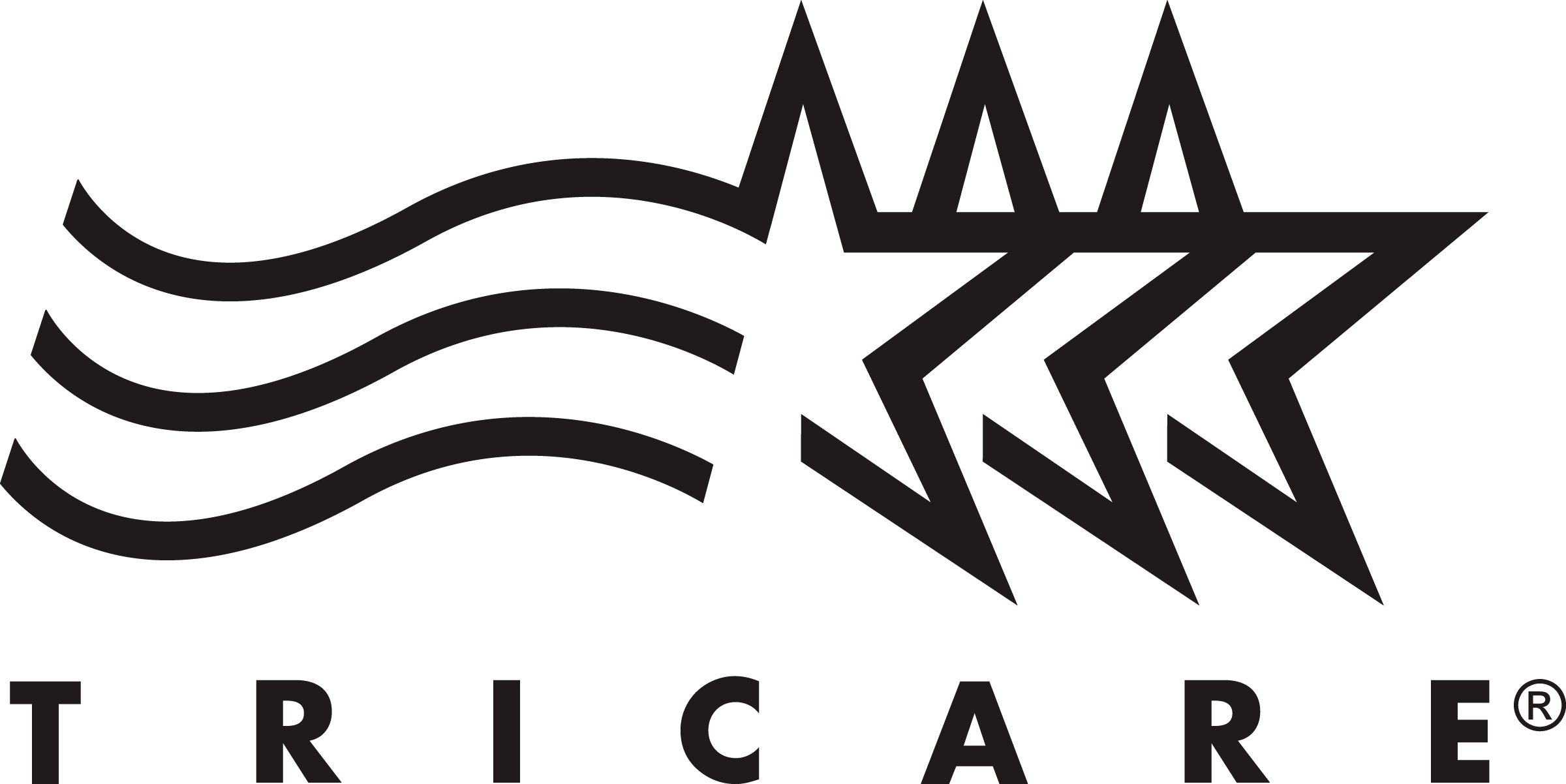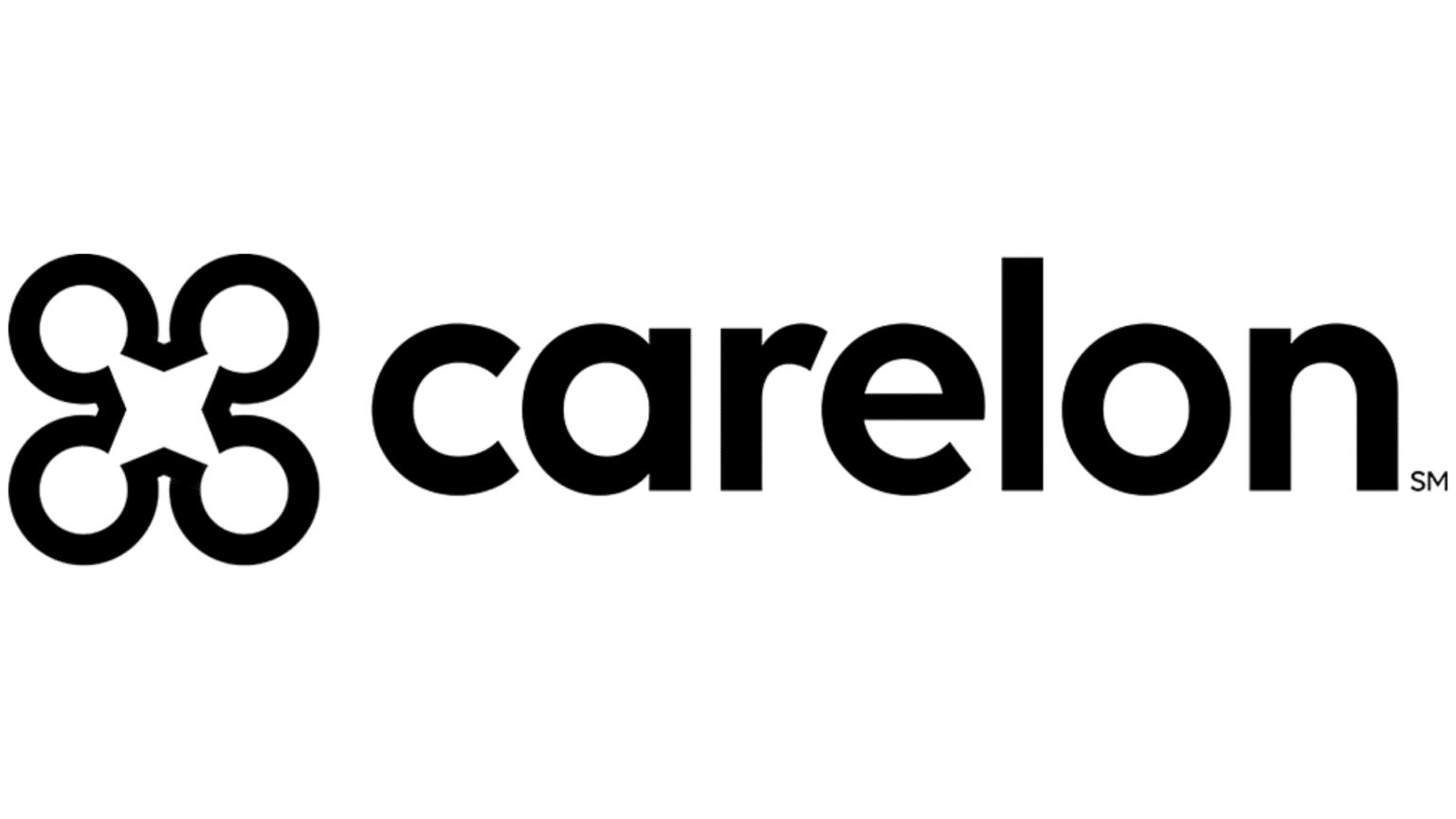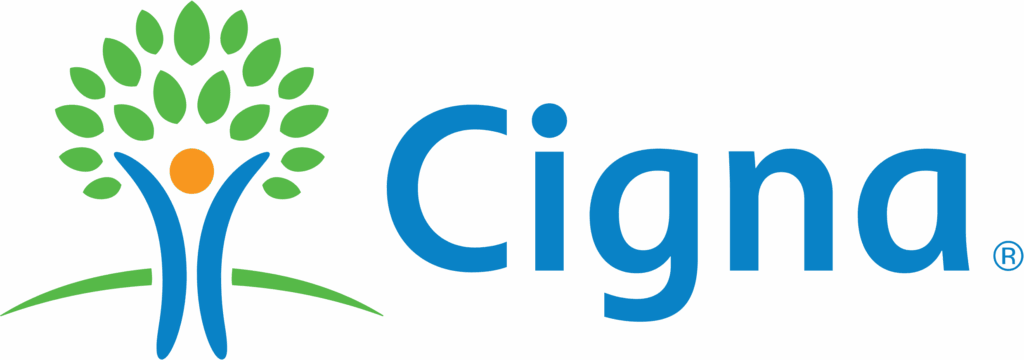Challenges in Managing Mood Swings and Cravings
Managing the intertwined symptoms of bipolar disorder and addiction presents a unique set of challenges. The symptoms of each condition can often overlap, mimic, or exacerbate one another, making it difficult to discern what is a mood swing driven by the bipolar disorder and what is a craving or withdrawal symptom related to substance use. This confusion can complicate diagnosis and treatment significantly.
The difficulty of distinguishing between mood swings and cravings is a major hurdle. For example, irritability, restlessness, and difficulty sleeping can be symptoms of a manic or hypomanic episode in bipolar disorder. However, these exact same symptoms can also be signs of withdrawal from certain substances like opioids or alcohol, or intense cravings for stimulants. Similarly, fatigue, low mood, difficulty concentrating, and loss of interest are hallmark symptoms of bipolar depression. Yet, these can also be withdrawal symptoms from stimulants or chronic effects of substance abuse. The individual might interpret a surge of anxiety as the onset of a manic episode and self-medicate with a substance, when in reality, it was a craving or withdrawal symptom. This misinterpretation can lead to relapse or disrupt the careful management of their bipolar medication.
The impact of mood swings on addiction recovery is profound. When an individual is in a depressive state, their motivation to attend therapy, participate in support groups, or maintain healthy coping mechanisms can plummet. They might feel hopeless about their ability to stay sober and relapse. Conversely, during a manic or hypomanic episode, impaired judgment, impulsivity, and risk-taking behavior increase dramatically, making a relapse much more likely. The elevated mood, inflated confidence, and disregard for consequences that can accompany mania can lead someone to believe they can use “just once” or that they no longer need their recovery program or their bipolar medication. These episodes can completely derail months or years of hard-won sobriety. Maintaining stability in mood is not just about managing bipolar disorder; it is a critical component of sustaining addiction recovery. The unpredictable nature of bipolar mood swings means that the individual in recovery must constantly be prepared for potential shifts and have robust strategies in place to navigate them without resorting to substance use.
Identifying common triggers for both mood swings and cravings is vital for developing effective coping strategies. Triggers can be internal or external.
– Internal triggers: These originate within the person, such as stress, anxiety, feelings of sadness or anger, boredom, or physical discomfort (like withdrawal symptoms).
– External triggers: These come from the environment, including people (associates from past substance use), places (locations where substance use occurred), things (paraphernalia, specific smells), or situations (social gatherings where substances are present, relationship conflicts, financial pressure, lack of sleep).
For individuals with co-occurring bipolar disorder and addiction, the triggers can be doubly challenging. Lack of sleep is a significant trigger for both manic episodes and cravings. High-stress situations can trigger depressive episodes and increase the urge to use substances to cope. Relationship conflicts can trigger both mood swings and cravings for emotional numbing. It is crucial to learn to identify these triggers and develop personalized action plans to manage them. This involves developing self-awareness, learning to recognize the early warning signs of an impending mood swing or a rising craving, and practicing healthy coping mechanisms instead of turning to substances. This complex interplay between mood, triggers, and cravings highlights the necessity of an integrated treatment approach that addresses both conditions holistically. Specialized support that understands this dynamic, like the
Virtual IOP Program offered by Compassion Recovery Center, is designed to help individuals in California navigate these specific challenges from the comfort and safety of their home.
Effective Strategies for Managing Mood Swings
Effectively managing the mood swings associated with bipolar disorder is not only essential for mental well-being but also a cornerstone of sustaining addiction recovery when both conditions are present. While substance use can temporarily mask the discomfort of mood swings, it ultimately worsens the underlying disorder and fuels the addiction cycle. Therefore, learning healthy, sustainable strategies for mood management is critical.
The importance of medication management cannot be overstated in treating bipolar disorder. For many individuals, mood stabilizers are the primary and most effective treatment for preventing severe mood episodes, reducing their intensity, and lengthening periods of stability. Medications like lithium, valproic acid, lamotrigine, and certain antipsychotics can help regulate the extreme highs and lows. Finding the right medication or combination of medications, and the correct dosage, is often a process that requires close collaboration with a psychiatrist or prescribing physician. Adherence to the medication regimen is absolutely crucial. Skipping doses or stopping medication abruptly can lead to a rapid return of symptoms and increase the risk of relapse into a mood episode or substance use. Given the history of substance use, it’s vital that medication management is handled by professionals experienced in treating co-occurring disorders, as some medications for bipolar disorder might interact with substances or have potential for misuse, though this is less common with primary mood stabilizers compared to medications for anxiety or sleep. For those receiving remote care, telepsychiatry can facilitate this essential medication management, allowing for regular check-ins and adjustments without the need for in-person visits. Compassion Recovery Center can assist clients in coordinating care with prescribing physicians experienced in dual diagnosis, including exploring options for
Outpatient Detox if needed, under medical supervision, to safely begin the recovery process.
Therapy plays a vital role in managing bipolar mood swings. While medication addresses the biological component, therapy provides the individual with essential skills and understanding to navigate their illness and its impact. Cognitive Behavioral Therapy (CBT) is particularly effective.
Online CBT therapy, offered through virtual rehab programs, helps individuals identify negative thought patterns and behaviors that contribute to mood instability or trigger substance use. It teaches strategies for challenging distorted thinking and developing healthier coping responses. For example, someone might learn to identify early warning signs of a depressive episode (like increased fatigue, loss of interest) and implement specific behavioral strategies (like scheduling enjoyable activities, reaching out to support) to mitigate the severity. For impending mania, they might learn to recognize racing thoughts and increased impulsivity and use techniques to slow down and think through consequences before acting. Dialectical Behavior Therapy (DBT) is another valuable therapy that focuses on mindfulness, distress tolerance, emotion regulation, and interpersonal effectiveness – skills highly relevant for managing intense mood swings and improving relationships, which can be strained by bipolar disorder and addiction. The accessibility of virtual therapy makes it easier for individuals in locations like Orange County to consistently attend sessions from the privacy and comfort of their own space, removing barriers like transportation or social anxiety that might prevent in-person attendance.
Beyond medication and formal therapy, lifestyle changes and coping mechanisms are powerful tools for managing mood swings. These contribute to overall stability and resilience.
– Consistent Sleep Schedule: One of the most critical factors. Irregular sleep can trigger manic or depressive episodes. Establishing and sticking to a regular sleep-wake cycle, even on weekends, helps regulate circadian rhythms which are often disrupted in bipolar disorder.
– Healthy Diet: Balanced nutrition supports overall brain health. Avoiding excessive sugar, caffeine, and processed foods can help stabilize energy levels and mood.
– Regular Exercise: Physical activity has been shown to have significant benefits for mood regulation, stress reduction, and improving sleep. Finding enjoyable forms of exercise and incorporating them into a routine is key.
– Stress Management: Identifying sources of stress and developing healthy coping mechanisms like mindfulness, meditation, deep breathing exercises, or yoga can help prevent stress from triggering mood episodes.
– Routine and Structure: Establishing a predictable daily routine can provide a sense of stability and control, which is especially helpful for managing the unpredictability of bipolar mood swings.
– Monitoring Mood: Regularly tracking mood, sleep patterns, and potential triggers (using a journal or app) can help individuals become more aware of their patterns and identify warning signs early.
– Developing a Relapse Prevention Plan: This plan should include strategies for recognizing early signs of mood swings or cravings, identifying triggers, listing coping mechanisms, and outlining who to contact (therapist, sponsor, family) in case of a crisis.
Managing bipolar mood swings requires a multi-faceted approach involving medical, therapeutic, and lifestyle interventions. It’s an ongoing process of self-awareness, skill-building, and consistent effort. By effectively stabilizing mood, individuals significantly strengthen their foundation for addiction recovery. Remote treatment programs understand the importance of integrating these strategies into a comprehensive care plan, providing the necessary support and education to help individuals gain control over their mood swings and their lives.
Addressing Cravings in Addiction Recovery
Just as managing mood swings is crucial for those with bipolar disorder, effectively addressing cravings is paramount for successful addiction recovery, especially when co-occurring with a mood disorder. Cravings are intense urges to use a substance, and they can be powerful and challenging to resist, particularly when triggered by stress, emotions, or environmental cues.
Learning techniques for managing cravings is a fundamental part of addiction treatment. Recovery is not about never having a craving again; it’s about developing the skills to experience a craving without acting on it. Some common and effective techniques include:
– Urge Surfing: This mindfulness technique involves viewing cravings like waves in the ocean – they build, peak, and eventually subside. Instead of trying to fight or suppress the craving, the individual acknowledges its presence without judgment, observing the physical sensations and thoughts associated with it, knowing that it will pass.
– Distraction: Engaging in an activity that occupies the mind and body can help ride out a craving until its intensity lessens. This could be anything from listening to music, reading, exercising, talking to a friend, cleaning, or playing a game.
– Delaying: Cravings are often short-lived in their peak intensity. Committing to waiting a specific amount of time (e.g., 15 or 30 minutes) before giving in can help the craving diminish naturally.
– Identifying and Avoiding Triggers: As discussed earlier, recognizing what situations, people, places, or internal states trigger cravings is crucial. Once identified, individuals can work on strategies to avoid high-risk situations when possible or develop specific plans for navigating them if avoidance isn’t feasible.
– Using Positive Self-Talk: Challenging thoughts like “I need this” or “Just one won’t hurt” with realistic and positive affirmations like “I am strong enough to get through this” or “This craving will pass” can be empowering.
– Seeking Support: Reaching out to a therapist, sponsor, support group member, or trusted friend during a craving can provide immediate support, accountability, and encouragement.
The role of support groups and virtual rehab programs is invaluable in addressing cravings. Support groups like Alcoholics Anonymous (AA) and Narcotics Anonymous (NA), or specialized groups for dual diagnosis, provide a community of people who understand the experience of cravings and recovery. Sharing experiences, hearing how others cope, and having immediate support available can make a significant difference. The accessibility of virtual support group meetings means help is often just a click away, regardless of location or time of day, which is particularly beneficial for those in remote or less accessible areas, or those managing the social anxiety that can sometimes accompany bipolar disorder. Virtual rehab programs, like a
Virtual IOP Program or
Partial Hospitalization Program (PHP) offered via telehealth, integrate craving management techniques into therapy sessions, group discussions, and individual counseling. Therapists teach specific coping skills, help individuals develop personalized craving management plans, and provide support as they practice these new behaviors in real-life situations. The structured environment of virtual rehab provides accountability and a consistent focus on recovery, which is essential when dealing with powerful urges.
The importance of a strong support system cannot be emphasized enough. Recovery from addiction, especially with a co-occurring disorder like bipolar disorder, is not a journey meant to be walked alone. A support system can include family members, partners, friends, fellow individuals in recovery, sponsors, therapists, and treatment staff. These individuals provide emotional support, encouragement, accountability, and practical assistance. They can offer a listening ear, a reminder of why sobriety is important, or simply a distraction during a difficult moment. For individuals with bipolar disorder and addiction, a supportive network that understands both conditions is ideal. Family members can learn about both illnesses, recognize warning signs of mood shifts or potential relapse triggers, and know how to respond constructively. Building and maintaining a strong support system requires effort, communication, and setting healthy boundaries, but the benefits for long-term recovery and stability are immense. For those seeking help in California, especially Orange County, reaching out to a center equipped to support dual diagnosis and offering accessible virtual programs can be the first step in building this vital support structure.
Contact Us today to learn how Compassion Recovery Center can help you build a strong foundation for managing cravings and supporting your recovery.
Integrating Treatment for Bipolar Disorder and Addiction
Treating bipolar disorder and addiction separately is like trying to paddle a canoe with only one oar – you just end up going in circles. Because these conditions are so deeply intertwined, with symptoms influencing each other, the most effective approach is integrated treatment. Integrated treatment means that both the mental health disorder (bipolar disorder) and the substance use disorder are treated simultaneously, by the same team of clinicians or by closely collaborating teams.
The benefits of integrated treatment approaches are significant and well-documented. When both conditions are addressed together, treatment outcomes improve dramatically. Individuals are more likely to remain in treatment longer, experience fewer relapses (both in substance use and mood episodes), see a reduction in symptom severity for both disorders, improve their overall functioning (in relationships, work, etc.), and experience a better quality of life. Integrated treatment recognizes that substance use can exacerbate bipolar symptoms and interfere with medication efficacy, while untreated or poorly managed bipolar disorder significantly increases the risk of relapse. By treating both concurrently, clinicians can develop a cohesive treatment plan that considers the complex interaction between the two conditions. For example, a therapist can help an individual explore how their manic episodes might trigger impulsive substance use and develop specific strategies to manage manic energy without turning to drugs or alcohol. Simultaneously, a psychiatrist can adjust bipolar medication while considering how substance use might be affecting mood stability. This coordinated care ensures that no issue is overlooked and that treatment strategies for one condition don’t inadvertently undermine recovery from the other.
Remote IOP (Intensive Outpatient Program) and telehealth addiction treatment are particularly well-suited for integrated treatment, especially for individuals with co-occurring bipolar disorder and addiction. Telehealth removes geographical barriers, allowing individuals in locations like Orange County, California, to access specialized care without needing to travel to an in-person facility daily. This is a major advantage for individuals who may struggle with the energy fluctuations or social anxiety associated with bipolar disorder.
– Accessibility and Flexibility:
Virtual IOP Program and
Partial Hospitalization Programs (PHP) offered remotely provide structured, intensive therapy while allowing individuals to remain in their own homes. This means they can continue to live with family, fulfill essential responsibilities (like childcare or remote work, if feasible), and maintain their connection to their local support system. This level of flexibility is often crucial for someone managing the daily realities of bipolar disorder.
– Comfort and Privacy: Receiving treatment from the comfort and privacy of home can reduce anxiety and make it easier to open up in therapy sessions. This is particularly helpful for individuals who may feel overwhelmed or anxious in group settings.
– Integrated Care Coordination: Reputable virtual rehab programs specializing in dual diagnosis can coordinate care between therapists, counselors, and any prescribing physicians (including telepsychiatrists) involved in managing the individual’s bipolar medication. This ensures a truly integrated approach where everyone on the care team is aware of and addressing both conditions within the overall treatment plan.
– Skill Building in Real-World Setting: Participating in therapy from home allows individuals to immediately apply the skills they learn in therapy sessions (like managing triggers, coping with mood shifts, using relaxation techniques) in their natural environment, making the transition back to daily life post-treatment smoother.
How Compassion Recovery Center can help: Compassion Recovery Center specializes in providing comprehensive, compassionate remote
Drug Rehab Programs and
Alcohol Rehab Programs via telehealth, with a strong focus on serving the Orange County, California area. Our programs are designed to treat co-occurring disorders like bipolar disorder and addiction simultaneously. We offer:
– Specialized Dual Diagnosis Treatment: Our clinicians are experienced in understanding the complex interplay between bipolar disorder and substance use disorders. They provide integrated therapy that addresses the unique challenges faced by individuals with both conditions.
– Virtual IOP and PHP: Structured, intensive outpatient and partial hospitalization programs delivered remotely, offering significant flexibility while providing the necessary level of care. These programs include group therapy, individual counseling, and psychoeducation.
– Evidence-Based Therapies: We utilize proven therapeutic modalities like CBT, DBT, and others, adapted for online delivery, to help individuals manage mood swings, cope with cravings, identify triggers, and build healthy coping mechanisms.
– Coordination of Care: We understand the importance of medication management for bipolar disorder and work to coordinate care with your prescribing physician or connect you with telepsychiatry services experienced in dual diagnosis.
– Supportive Community: Our virtual group sessions provide a safe and supportive environment where individuals can connect with peers who understand their struggles with both mood disorders and addiction.
– Focus on Relapse Prevention: We help clients develop robust, personalized relapse prevention plans that specifically address the triggers and challenges related to both bipolar mood swings and substance cravings.
Choosing integrated remote treatment from a center like Compassion Recovery Center means choosing a path that acknowledges the full complexity of your experience and provides targeted support for healing on all fronts. If you or a loved one are struggling with bipolar disorder and addiction in California, especially Orange County, exploring our virtual treatment options could be the crucial next step towards recovery.
Get help now and learn more about how our telehealth services can support your journey.
The Role of Medication-Assisted Treatment (MAT)
Medication-Assisted Treatment (MAT) is an evidence-based approach that combines medications with counseling and behavioral therapies to treat substance use disorders. It is primarily used for opioid addiction and alcohol use disorder but can be a valuable tool in the recovery journey for individuals with co-occurring bipolar disorder and addiction, provided it is integrated into a comprehensive treatment plan that also addresses the mood disorder.
MAT works by helping to normalize brain chemistry, relieve physiological cravings, and block the euphoric effects of opioids or reduce the negative effects of alcohol withdrawal and cravings. This can provide a critical window of stability during which the individual can engage fully in therapy and address the underlying issues contributing to both their addiction and their bipolar disorder.
– For Opioid Addiction: Medications like buprenorphine (Suboxone), methadone, and naltrexone (Vivitrol) are used. Buprenorphine and methadone are agonists or partial agonists that reduce withdrawal symptoms and cravings. Naltrexone is an antagonist that blocks the effects of opioids, reducing the likelihood of relapse if opioids are used.
– For Alcohol Use Disorder: Medications like naltrexone (Vivitrol), acamprosate (Campral), and disulfiram (Antabuse) are used. Naltrexone helps reduce cravings and the pleasurable effects of alcohol. Acamprosate helps reduce post-acute withdrawal symptoms like insomnia and anxiety. Disulfiram causes unpleasant physical reactions if alcohol is consumed, serving as a deterrent.
The benefits of MAT are well-established. It has been shown to improve patient survival, increase retention in treatment, decrease illicit opioid use and other criminal activity among people with opioid addiction, improve birth outcomes among pregnant women with opioid addiction, and reduce the risk of relapse. When someone is also managing the challenging mood swings of bipolar disorder, MAT can provide much-needed stability on the addiction front, making it easier to focus on managing their mental health. By reducing intense cravings and withdrawal symptoms, MAT can lessen the likelihood that an individual will self-medicate their bipolar symptoms with substances or relapse during a mood episode. It allows the individual and their treatment team to focus on the behavioral and psychological aspects of both recovery and bipolar management without the constant, overwhelming physiological drive to use substances.
Availability of MAT treatment online is increasingly becoming a reality through telehealth services. For certain medications, particularly those for opioid addiction like buprenorphine, regulations have evolved to allow prescribing via telemedicine after an initial in-person evaluation or under specific conditions. Similarly, medications for alcohol use disorder can often be prescribed and monitored through virtual appointments. This means that individuals participating in
Virtual IOP Program or other remote treatment programs can potentially receive
MAT treatment online as part of their integrated care plan. This eliminates the barrier of needing to visit a physical clinic frequently for medication, making treatment more accessible, especially for those in Orange County who prefer or need the flexibility of remote services.
It’s important to understand that MAT is not a standalone cure; it is most effective when combined with counseling and behavioral therapies. The medication helps manage the physical dependence and cravings, while therapy addresses the psychological aspects of addiction and the co-occurring bipolar disorder, teaching coping skills, addressing trauma, and developing relapse prevention strategies. For individuals with co-occurring bipolar disorder, the behavioral therapies component of MAT is crucial for learning to manage mood swings and their impact on substance use. A comprehensive
Compassion Recovery Center remote program can integrate MAT into the overall treatment plan, ensuring that medication is managed appropriately alongside therapy for both bipolar disorder and addiction, providing a holistic path to recovery. Discussing the possibility of MAT as part of your integrated treatment plan is a conversation you can have with the clinical team during a confidential assessment.
Couples Therapy and Support Systems
Addiction and bipolar disorder don’t just affect the individual; they significantly impact the entire family system, particularly partners and spouses. Relationships often bear the brunt of the mood swings, impulsive behaviors, broken trust, and emotional turmoil associated with these conditions. Involving family and partners in the treatment process is often crucial for healing relationships, building a strong support system, and fostering an environment conducive to long-term recovery and stability.
The importance of involving family and partners in treatment stems from several factors. Family members are often the first to notice signs of struggle, whether it’s a mood shift or a return to substance use. They can be invaluable in providing support, encouragement, and accountability. However, they also need support themselves. Living with someone who has bipolar disorder and addiction can be incredibly stressful, confusing, and emotionally draining. Family members may experience feelings of guilt, anger, fear, or resentment. They may have developed unhealthy coping patterns themselves, such as codependency or enabling behaviors. Including them in treatment provides them with education about both conditions, helps them understand that these are treatable illnesses, and teaches them healthy ways to support their loved one without enabling substance use or becoming overwhelmed by mood swings. It also gives them a voice and a space to heal from the impact of the diseases on their own lives.
The benefits of virtual couples counseling rehab are particularly relevant for those seeking remote treatment. Attending counseling sessions together, even from different locations if necessary, can help partners:
– Improve Communication: Learn healthier ways to communicate needs, feelings, and concerns, especially regarding mood swings, triggers, cravings, and boundaries.
– Rebuild Trust: Address the breaches of trust caused by addiction and impulsive behaviors associated with bipolar episodes, and work towards repairing the relationship foundation.
– Set Healthy Boundaries: Learn how to establish and maintain boundaries that protect both the individual in recovery and their loved ones from harmful behaviors associated with active addiction or uncontrolled mood episodes.
– Develop Joint Coping Strategies: Create shared plans for navigating challenges, including recognizing warning signs of relapse or mood shifts and having a coordinated response.
– Understand Co-occurring Disorders: Gain a deeper understanding of how bipolar disorder and addiction affect behavior and emotions, fostering empathy and reducing blame.
– Strengthen Support System: Work together to build a stronger partnership that acts as a supportive unit within the broader recovery network.
Virtual couples counseling rehab makes accessing this vital support more convenient. Partners don’t need to arrange schedules and travel to a physical location; they can participate from home, potentially making it easier to attend sessions consistently. This accessibility is a key benefit of remote rehab programs for individuals and families in Orange County and throughout California.
Building a supportive environment for recovery goes beyond formal counseling. It involves creating a home environment that promotes health and sobriety. This might include removing substances from the home, establishing clear rules and expectations, celebrating successes, and engaging in healthy activities together. For families navigating bipolar disorder, it also involves learning to recognize the signs of impending mood episodes and having a plan in place to support the individual during these times, ensuring medication adherence, and knowing when professional help is needed. A supportive environment is one where the individual feels loved, understood, and supported in their recovery journey, while family members feel empowered, educated, and cared for as well. Compassion Recovery Center recognizes the critical role of family and offers opportunities for family involvement and education as part of our comprehensive virtual treatment programs. We believe that healing happens not just for the individual, but for the entire family system. If your relationship has been impacted by bipolar disorder and addiction, exploring virtual couples or family counseling could be a powerful step towards healing and strengthening your support system.
Exploring Treatment Options and Taking the First Step
Understanding the complexities of bipolar disorder and addiction is a crucial first step, but the real journey towards healing begins by exploring available treatment options and taking action. Given the intricate relationship between these two conditions, integrated treatment that addresses both simultaneously is the gold standard. For many individuals, particularly those in California and the Orange County area seeking flexibility and privacy, remote treatment offers a compelling and effective pathway to recovery.
There are various levels of care in addiction treatment, and the appropriate level depends on the severity of the addiction, the stability of the bipolar disorder, and individual circumstances.
– Outpatient Detox: For some individuals, medically supervised detoxification may be the first step to safely withdraw from substances.
Outpatient Detox allows individuals to withdraw at home under medical supervision, often supported by telehealth check-ins. This requires a safe home environment and strong support system.
– Partial Hospitalization Program (PHP): PHP is a more intensive level of outpatient care, often involving several hours of therapy and groups per day, multiple days a week. A
Virtual Partial Hospitalization Program (PHP) offers this intensity via telehealth, providing significant structure and support while allowing the individual to remain at home. This level is suitable for those who need intensive support but do not require 24/7 medical supervision.
– Intensive Outpatient Program (IOP): IOP is a step down from PHP, offering fewer hours of therapy and groups per week but still providing a structured program of support and skill-building. A
Intensive Outpatient Program (IOP), especially a
Virtual IOP Program, is ideal for individuals transitioning from a higher level of care or those whose condition is stable enough for less intensive, but still structured, support while living at home. This is a common and effective level of care for managing co-occurring bipolar disorder and addiction remotely.
– Outpatient Therapy and Support: This is the least intensive level, involving individual therapy, group therapy, and participation in support groups on a less frequent basis. It’s suitable for individuals with stable recovery and mood or as step-down care after completing a more intensive program.
Compassion Recovery Center specializes in providing these higher levels of outpatient care (Virtual IOP and PHP) through a comprehensive telehealth platform, specifically designed to meet the needs of individuals with co-occurring disorders in California, with a strong focus on the Orange County community. Our virtual programs offer the structure, evidence-based therapies, and integrated dual diagnosis care necessary to effectively manage both bipolar disorder and addiction from the comfort of your home. We understand the unique challenges of managing mood swings and cravings simultaneously and our clinical team is trained to provide the specific support needed for these complex conditions.
Taking the first step can feel daunting, especially when you are grappling with the overwhelming symptoms of bipolar disorder and the powerful grip of addiction. However, reaching out for help is an act of courage and the most critical action you can take towards building a stable, fulfilling life. Exploring your options doesn’t commit you to anything; it simply provides you with information and a clear path forward.
Compassion Recovery Center is here to help you navigate these options. We offer confidential assessments to understand your specific needs, the severity of your conditions, and recommend the most appropriate level of care within our virtual programs. We also understand that concerns about cost and insurance coverage can be a barrier. Our admissions team can assist you with understanding your benefits and can help you
verify your insurance online quickly and discreetly. We aim to make the process of accessing care as smooth and stress-free as possible.
Remember, living with co-occurring bipolar disorder and addiction is challenging, but it is treatable. You don’t have to face it alone. With integrated treatment that addresses both your mood stability and your recovery from substance abuse, you can learn to manage your symptoms, cope with triggers and cravings, build a strong support system, and reclaim your life. Choosing a
remote drug rehab Orange County center like Compassion Recovery Center means choosing a flexible, accessible, and specialized path to recovery. We are ready to support you every step of the way.
Reach out today to start your journey towards integrated healing and lasting well-being.
Navigating Daily Life with Co-occurring Bipolar Disorder and Addiction
Successful recovery involves more than just attending therapy sessions; it’s about integrating the skills and knowledge gained into the fabric of daily life. For individuals managing co-occurring bipolar disorder and addiction, this means developing strategies to navigate the unique challenges that arise in everyday situations, maintaining routines, and utilizing coping mechanisms learned in treatment to sustain both mood stability and sobriety.
One significant aspect of navigating daily life is maintaining consistency, especially regarding medication, sleep, and routine. As discussed, medication adherence is paramount for managing bipolar disorder. Incorporating medication into a daily routine, perhaps using reminders or pill organizers, helps ensure consistency. Similarly, prioritizing a consistent sleep schedule is a non-negotiable for preventing mood episodes. Establishing a regular bedtime and wake-up time, even on weekends, and creating a relaxing bedtime routine can make a significant difference. Daily routines provide structure and predictability, which can be very grounding for someone with bipolar disorder and can also help fill time that might otherwise be spent dwelling on cravings. This might involve scheduling regular meal times, exercise, work or volunteer activities, therapy sessions, and leisure time.
Managing stress in daily life is another crucial skill. Stress is a major trigger for both mood swings and cravings. Identifying daily stressors – whether they are work-related, financial, relational, or environmental – and developing healthy ways to cope is vital. This could involve practicing mindfulness or meditation, engaging in regular physical activity, spending time in nature, pursuing hobbies, setting realistic expectations for oneself, and learning to say no to overwhelming commitments. For those in virtual rehab programs like a
Virtual IOP Program, stress management techniques are often a core component of the curriculum, providing practical tools that can be immediately applied to daily life.
Social situations can present significant challenges. Navigating social events where alcohol or drugs are present requires preparation and a clear plan. This might involve bringing a sober friend, planning your exit strategy, having a non-alcoholic drink in hand, and practicing polite ways to decline substances. For individuals with bipolar disorder, social interactions can sometimes be overwhelming, particularly during manic or depressive episodes. Learning healthy social skills, recognizing social triggers for mood shifts or cravings, and knowing when to step away from a situation are important. Maintaining healthy relationships with supportive friends and family is key, while setting boundaries with those who are not supportive of recovery is also necessary. Virtual support groups can offer a safe space to practice social interaction skills and gain support from peers facing similar challenges, all from the comfort of home.
Finances can be a major stressor and a trigger for both conditions. Impulsive spending during manic episodes can lead to significant debt, while financial stress can trigger depressive episodes and increase the urge to self-medicate. Developing a budget, seeking financial counseling if needed, and having a trusted person to help manage finances during periods of mood instability can be very helpful. Managing finances responsibly becomes part of the overall stability plan in recovery.
Boredom and unstructured time can also be significant triggers for cravings. Finding healthy ways to fill time and engage in enjoyable, meaningful activities is important. This could involve rediscovering old hobbies, learning new skills, volunteering, or pursuing educational goals. A structured
Intensive Outpatient Program (IOP) or PHP provides significant structure during the day, helping individuals build healthy routines and engage in therapeutic activities. As they transition to less intensive care, intentionally planning their time becomes crucial.
Self-care is not a luxury; it is a necessity for managing both bipolar disorder and addiction. This includes prioritizing sleep, nutrition, exercise, hygiene, and engaging in activities that bring joy and relaxation. Learning to listen to your body and mind, recognizing the early warning signs of an impending mood shift or increasing cravings, and taking proactive steps to address them is key to preventing relapse. This might involve reaching out to your therapist, attending an extra support group meeting, adjusting your schedule to get more rest, or utilizing specific coping skills you’ve learned.
Compassion Recovery Center’s remote programs are designed to help individuals develop these essential daily living skills within a supportive therapeutic framework. Through individual counseling and group therapy, clients explore their personal triggers, develop personalized coping strategies for managing mood swings and cravings in real-world situations, and build the confidence needed to navigate the complexities of daily life in recovery. Our goal is not just abstinence, but empowering individuals with bipolar disorder and addiction to build stable, fulfilling lives from their own homes, with the ongoing support of our clinical team and community. If you are ready to explore how integrated virtual treatment can help you manage daily life in recovery,
reach out today.
Maintaining Long-Term Stability and Preventing Relapse
Achieving sobriety and stabilizing mood swings through integrated treatment is a monumental accomplishment, but maintaining long-term stability and preventing relapse requires ongoing effort and commitment. Recovery is a journey, not a destination, and for individuals with co-occurring bipolar disorder and addiction, this journey involves continuous self-monitoring, utilization of coping skills, strong support systems, and willingness to seek help when needed.
One of the most critical components of long-term stability for someone with bipolar disorder and addiction is consistent engagement in ongoing care. This typically involves continued individual therapy, participation in support groups, and consistent medication management for bipolar disorder, often through regular appointments with a prescribing physician or telepsychiatrist. Even after completing a more intensive program like
Virtual IOP Program or PHP, maintaining a connection to the recovery community and mental health professionals provides essential accountability and support. Remote outpatient therapy and virtual support groups make this ongoing engagement highly accessible, allowing individuals to easily integrate appointments into their life without significant disruption.
Developing a robust relapse prevention plan is essential. This plan should be highly personalized and cover strategies for both substance use relapse and bipolar mood episode relapse. Key elements include:
– Identifying Warning Signs: What are your personal early warning signs that a mood episode might be starting (e.g., decreased sleep, increased irritability, racing thoughts for mania; increased fatigue, withdrawal, loss of interest for depression)? What are your early warning signs of increasing cravings or potential substance use (e.g., increased thoughts about using, feeling restless or irritable, avoiding recovery contacts)?
– Identifying Triggers: Review and continuously update your list of internal and external triggers for both mood swings and cravings.
– Coping Strategies: Detail the specific coping skills you will use for each type of trigger or warning sign (e.g., mindfulness for cravings, contacting support during stress, sticking to routine during early depression signs).
– Support Network: List the individuals you will contact if you experience warning signs or intense cravings (e.g., sponsor, therapist, trusted friend, family member). Include contact information.
– Crisis Plan: Outline what steps you will take if you feel you are at high risk of relapse or experiencing a severe mood episode (e.g., going to a safe place, calling a crisis line, contacting your doctor or therapist, seeking immediate medical attention if necessary).
– Lifestyle Maintenance: Reiterate the importance of maintaining healthy sleep, diet, exercise, and stress management routines as foundational elements of stability.
This plan should be reviewed and updated regularly with your therapist and support network. It serves as a roadmap to guide you through challenging moments and remind you of the strategies that have helped you in the past.
Building and nurturing a strong, sober support system is vital for long-term recovery. This includes family members, friends, peers in recovery, and professional contacts. Regular check-ins with a sponsor or recovery mentor can provide accountability and guidance. Participating in recovery community events or service work can also strengthen your commitment to sobriety and provide a sense of purpose. For those managing bipolar disorder, connecting with others who understand the unique challenges of co-occurring conditions can provide invaluable peer support. Virtual communities offer a convenient way to stay connected regardless of your physical location.
Mindfulness and self-compassion are powerful tools for long-term recovery. Practicing mindfulness can help you stay present, recognize warning signs early without judgment, and ride out difficult emotions or cravings. Cultivating self-compassion is essential because recovery involves setbacks. Learning to treat yourself with kindness and understanding when you stumble, rather than harsh criticism, is crucial for getting back on track quickly.
Recognizing that recovery is a process of continuous growth and learning is key. There will be ups and downs, challenges, and triumphs. Staying flexible, being willing to adjust your plan as needed, and remaining committed to learning and self-improvement are hallmarks of long-term stability. For individuals with bipolar disorder and addiction, this might mean adapting your coping strategies during different mood states or adjusting your routine during periods of higher stress.
Finally, knowing when and how to seek additional help is a strength, not a weakness. If you notice warning signs that you are struggling, if cravings become overwhelming, or if your mood starts to destabilize despite your best efforts, reaching out to your support network or clinical team immediately can prevent a full-blown relapse. Compassion Recovery Center remains a resource for ongoing support, whether through continued therapy, check-ins, or re-entry into a more intensive program if needed. Our commitment is to support your long-term recovery journey. If you’re in Orange County or anywhere in California and need specialized, compassionate remote care for co-occurring disorders, remember that help is available.
Check insurance coverage or
contact us for a confidential assessment to explore how we can support your path to lasting stability.
Conclusion: Finding Hope and Taking Action
Living with co-occurring bipolar disorder and addiction presents formidable challenges, marked by the complex interplay of intense mood swings and powerful cravings. We’ve explored how these conditions are deeply connected, often driving individuals into a cycle of self-medication that ultimately worsens both disorders. We’ve delved into the unique difficulties this dual diagnosis creates, including the confusion between mood symptoms and withdrawal, and the significant impact mood instability has on addiction recovery.
However, understanding these challenges also illuminates the path forward. We’ve highlighted the importance of effective strategies for managing both mood swings, including medication management, online CBT therapy, and lifestyle changes, and cravings, using techniques like urge surfing, distraction, and the vital support of virtual rehab programs and strong support systems. Crucially, we’ve emphasized that integrated treatment – addressing both bipolar disorder and addiction simultaneously – offers the best chance for lasting recovery and stability. Remote treatment options, such as
Virtual IOP Program and telehealth services, provide accessible, flexible, and effective pathways for individuals in California, especially in Orange County, to receive this integrated care from the comfort of their own homes. We’ve also touched upon the role of
MAT treatment online and the importance of involving family through
virtual couples counseling rehab to build a comprehensive support system.
Navigating daily life in recovery requires consistent effort, utilizing learned coping skills, maintaining healthy routines, and building resilience against triggers and stressors. Long-term stability hinges on continuous engagement in care, having a personalized relapse prevention plan, nurturing supportive relationships, and practicing self-compassion.
The journey towards managing co-occurring bipolar disorder and addiction is challenging, but it is absolutely a journey filled with hope. Recovery is possible. Stability is achievable. You do not have to navigate this complexity alone. Specialized, compassionate care that understands the unique interaction of these conditions is available.
Compassion Recovery Center is dedicated to providing this level of care through our accessible, flexible, and effective virtual rehab programs. Serving Orange County and the wider California area, our telehealth services offer integrated
Dual Diagnosis Treatment designed to help you manage your mood swings and your cravings, giving you the tools and support needed to build a life of stability, sobriety, and well-being. Our team is ready to provide the compassionate support you deserve.
Taking the first step can be the most difficult, but it is also the most powerful. Reach out for help. Explore your options. Learn how integrated remote treatment can work for you. Your recovery journey is waiting.
We encourage you to learn more about how Compassion Recovery Center can support your unique needs. Visit our website, explore our virtual programs, and take the crucial next step towards healing. You can
verify your insurance online easily and confidentially, or
contact us for a confidential assessment. Our team is here to answer your questions, address your concerns, and help you
start your recovery journey today. Don’t let the challenges of bipolar disorder and addiction keep you from the life you deserve. Hope and healing are within reach.
What is the relationship between addiction and bipolar disorder?
The relationship between addiction and bipolar disorder is significant and complex. Individuals with bipolar disorder are at a much higher risk of developing a substance use disorder. This is often due to attempts to self-medicate intense mood swings (using substances to calm mania or lift depression), genetic predisposition, or the way both conditions affect similar areas of the brain related to reward and impulse control. Substance use can also worsen bipolar symptoms and interfere with medication efficacy, creating a challenging cycle. Treating both conditions together through integrated care is essential.
What are common questions about bipolar disorder?
Common questions about bipolar disorder include: Is it curable (it’s a chronic condition requiring ongoing management, not a cure)? What’s the difference between bipolar I and bipolar II (severity of manic episodes)? What causes bipolar disorder (a combination of genetics, brain structure/function, and environmental factors)? How is it treated (medication, therapy, lifestyle changes)? Can people with bipolar disorder live normal lives (yes, with effective treatment and management)? How does it affect relationships (mood swings and impulsive behavior can be challenging for partners and family)?
What is unhealthy coping for bipolar people?
Unhealthy coping mechanisms for people with bipolar disorder often involve attempts to self-regulate extreme moods in destructive ways. This includes substance abuse (alcohol, drugs) to numb feelings or boost energy, impulsive behaviors (excessive spending, risky sex, gambling) during manic episodes, social withdrawal during depressive episodes, neglecting medication or therapy, engaging in conflict, or having inconsistent sleep patterns. These behaviors provide temporary relief but ultimately exacerbate mood instability and other life problems.
What is the best questionnaire for bipolar disorder?
There isn’t a single “best” questionnaire that definitively diagnoses bipolar disorder; diagnosis is made through a comprehensive clinical evaluation by a mental health professional. However, screening tools like the Mood Disorder Questionnaire (MDQ) or the Bipolar Spectrum Diagnostic Scale (BSDS) are commonly used to help identify individuals who might have bipolar disorder and warrant further assessment. These questionnaires ask about symptoms related to manic, hypomanic, and depressive episodes.
How can mood swings affect addiction recovery?
Mood swings significantly impact addiction recovery. During depressive episodes, individuals may lose motivation for recovery activities and feel hopeless, increasing relapse risk. During manic or hypomanic episodes, impaired judgment, impulsivity, and risk-taking behavior are heightened, making it more likely to engage in substance use. The intense emotions and instability of mood swings can also be powerful triggers for cravings. Effective management of bipolar mood swings is therefore critical for maintaining long-term sobriety.



